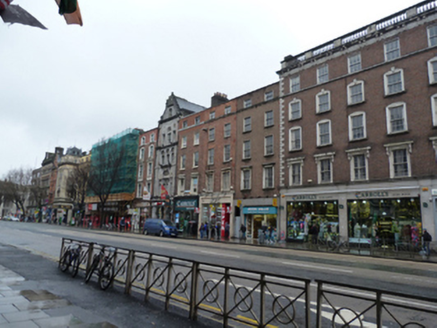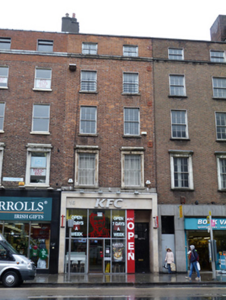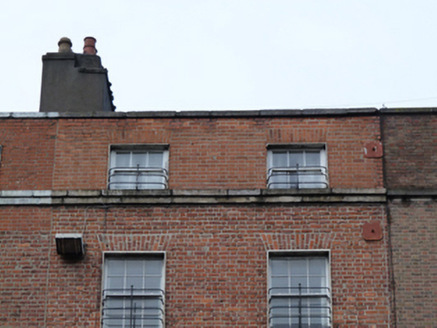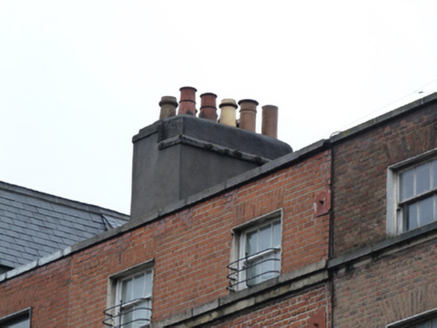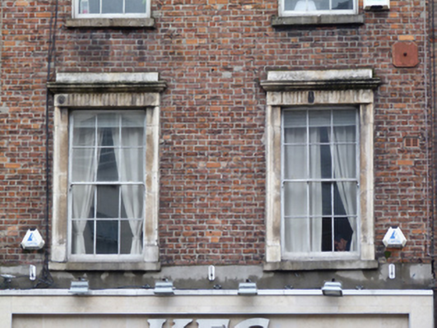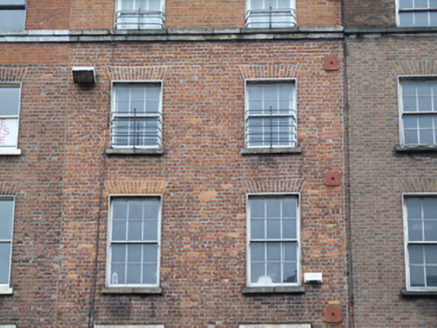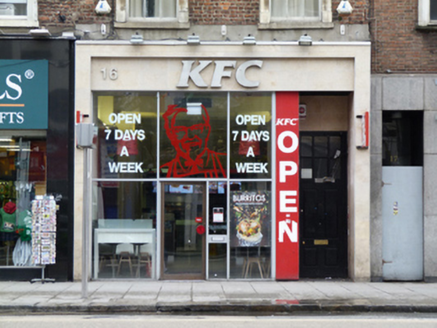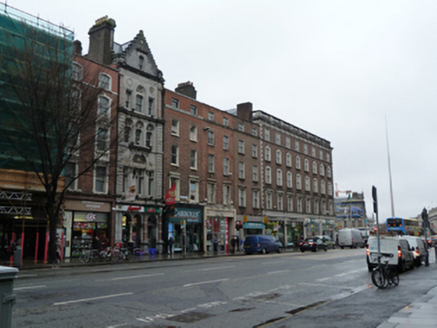Survey Data
Reg No
50020216
Rating
Regional
Categories of Special Interest
Architectural, Artistic, Historical, Social
Previous Name
John Hodges & Sons
Original Use
House
In Use As
Restaurant
Date
1790 - 1810
Coordinates
315969, 234291
Date Recorded
29/03/2015
Date Updated
--/--/--
Description
Terraced two-bay five-storey former house and shop, built c.1800, with recent shopfront to front (east) elevation. Now in use as retail outlet. T-plan pitched slate roof, hipped to rear (west), hidden behind brick parapet having render coping, smooth rendered chimneystacks with clay pots. Red brick walls, laid in Flemish bond, rebuilt to fourth floor, carved granite cornice over third floor and cast-iron tie plates, smooth rendered platband to first floor. Square-headed window openings with raised render reveals, granite sills, cornice forming continuous sill course to fourth floor, those to first floor having carved granite architraves and entablatures, cast-iron balconettes to third and fourth floor openings, three-over-three pane and six-over-six pane timber sliding sash windows. Recent stone clad shopfront to ground floor. Situated to west side and north end of Westmoreland Street.
Appraisal
Westmoreland Street, named after the tenth Earl of Westmoreland, was developed by the Wide Street Commissioners in the late eighteenth century as part of a network of streets connecting the newly built Carlisle Bridge (now O’Connell Bridge) and College Green. This building formed part of a unified terrace, designed by Henry Aaron Baker (1753-1836), of five-storey buildings formerly with stone shopfronts to the street. As new commercial and financial uses were introduced to the street in the second half of the nineteenth century, many façades were remodelled. The original carved stone dressings of the first floor windows and ashlar cornice still survive, lending continuity to the streetscape. They provide artistic interest to the classically restrained façade, and lend textural variation. John Hodges & Sons, who manufactured and sold ironmongery, is listed as the occupier in Griffith’s Primary Valuation.
